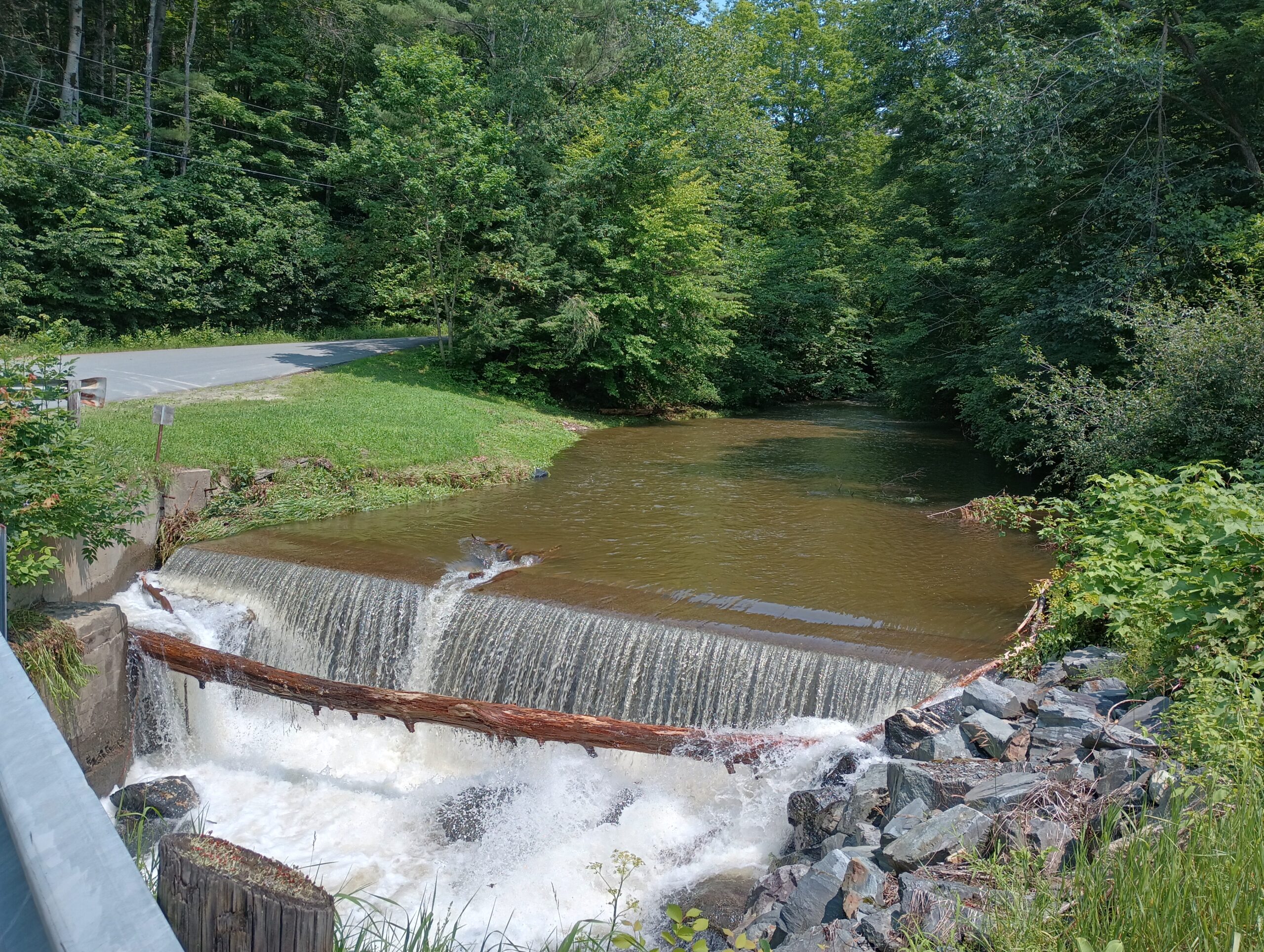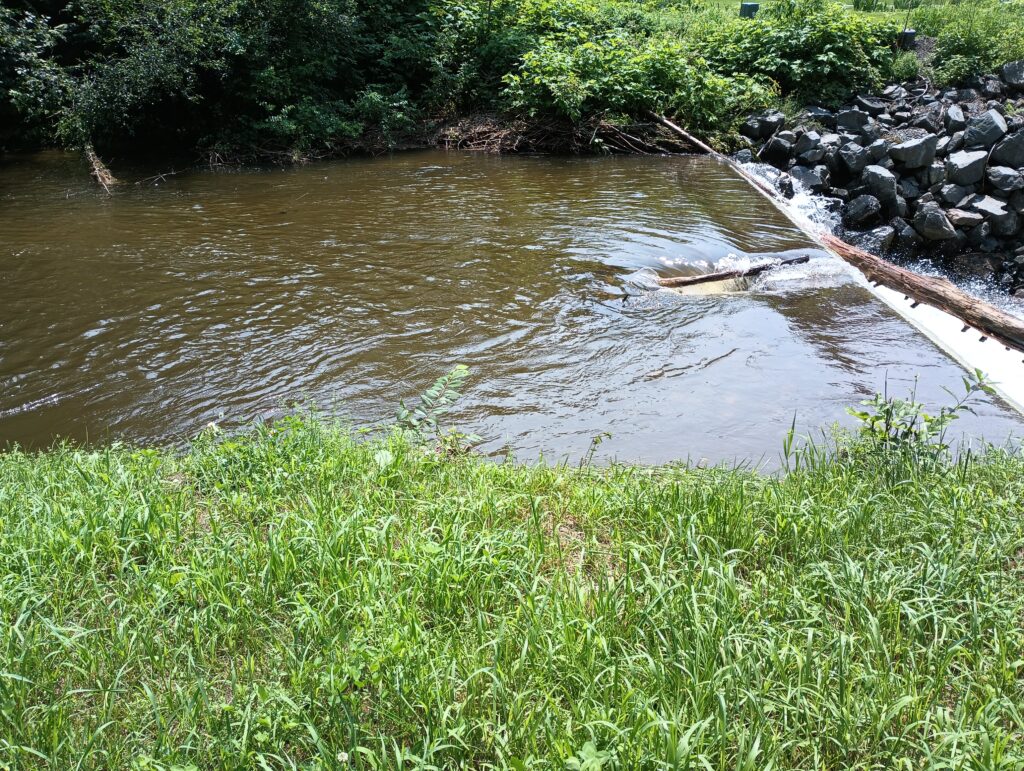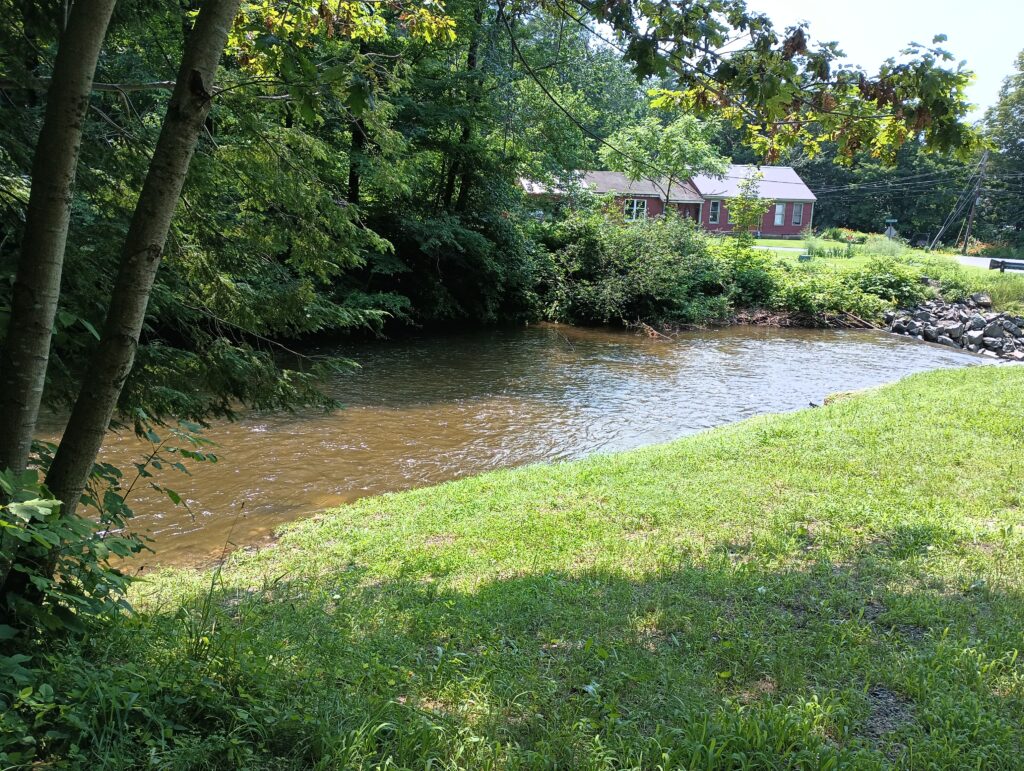Did you know that Cornish has its very own swimming area that also does double duty as a fire pond? If you travel to Cornish Flat, turn onto School Street and go to the end of the street to the intersection of School Street and Leavitt Hill Road, you can take a refreshing dip in the dammed area of Blow-Me-Down Brook
Town history tells us that in January 1967 Irene LeClair granted the town of Cornish a parcel of land that included portions along Blow-Me-Down Brook. The dam located at the corner of Leavitt Hill Road and School Street forms a “natural” pool that makes for an ideal swimming hole. Because of the condition of the old dam, an on-site inspection was completed in 1973 in order to acquire grant funds to repair and improve the dam. In June 1975, following a second pre-award on-site inspection (Image 1), a grant from the Land and Water Conservation Fund for $3000 was approved and matched by the Town of Cornish for improvements to the dam and the formal establishment of a public recreation area.
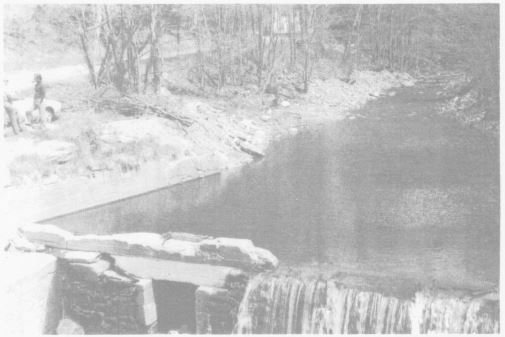
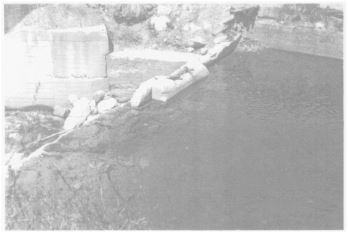
At the time of the grant request the proposed scope of the improvements included a stop-log control gate, fill for the shoulder, excavation and installation of 4” of beach sand, excavation of silt from behind the dam, landscaping and installation of a guardrail on the dam. The project was completed in July 1976 (Image 2) with the project finalized in 1981 (Image 3).
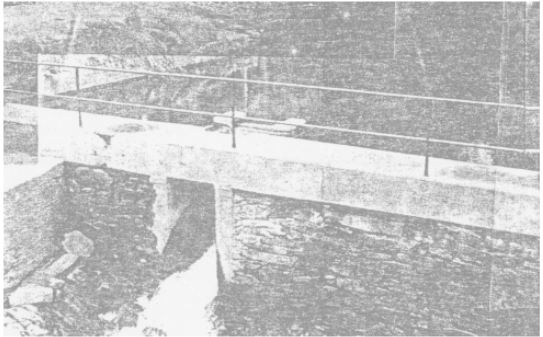
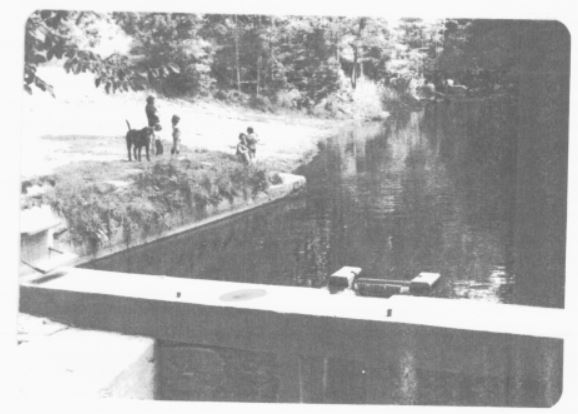
Although the beach sand and guardrails on the dam are gone, the swimming hole is still a refreshing break from the dog days of summer (hopefully we will have a few in August!), and who knows, you might even share the water with a duck or other wildlife during your visit (Images 4–6).
There is no lifeguard on duty, or trash receptacles provided, so please take appropriate precautions, supervise children, clean up after pets if needed and remove any trash from the area.
Many thanks to the town road crew and local volunteers for keeping the grass mowed and the area accessible. Parking is on the street.
